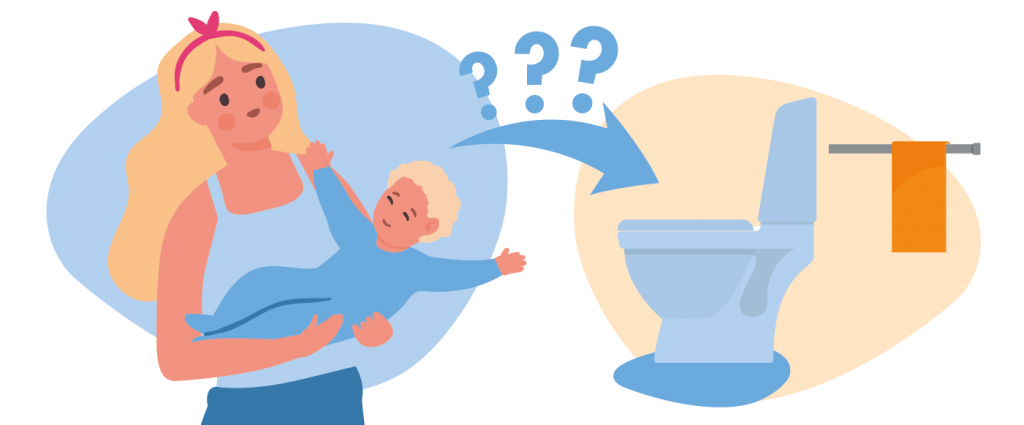How to manage overactive bladders in children
An overactive bladder is a fairly common condition in children, believed to affect around 15-20% of young people, with the likelihood of experiencing this decreasing as they age.1 Nonetheless, this specific kind of urinary incontinence can be very frustrating, both for parents (who will likely lament the extra toilet stops on a long car journey) and the children themselves.
However, there are many things you can do to deal with overactive bladders in children, including both preventative measures and management solutions. Read on to find out more!

What exactly is an overactive bladder in children?
An overactive bladder in a child is a common form of urinary incontinence, the primary symptom of which is the sudden and uncontrollable need to urinate.2 It’s often accompanied by frequent urination and nocturia (more commonly known as bedwetting) but doesn’t necessarily lead to total urinary incontinence.3 This sudden urge is often provoked by uncontrollable spasms in the bladder muscles and muscles surrounding the urethra.4 Lots of things can cause this, including:

- a previous urinary tract infection
- constipation
- fizzy drinks and caffeine, which irritate the bladder lining5
- allergies
- anxiety
- an abnormal bladder structure
- irritation of the bladder wall6
- poor toileting habits, such as “holding on” to wee if they’re distracted
- emotional stress, such as changing school
- pollakiuria (also known as urinary frequency syndrome)
- blackcurrants7.
In terms of how this conditionis defined, frequent urination is considered to be when your child is peeing eight or more times a day and only passing small amounts of wee at a time.8
If you think your child has an overactive bladder, you should speak to a doctor, especially if they’re over seven years old (the age at which they would be expected to have bladder control)9.

How to manage overactive bladders in children
There are many things you can try to help manage your child’s frequent urination, ranging from lifestyle factors, such as dietary changes and bladder training and exercises, to medical solutions.
As the saying goes, an ounce of prevention is worth a pound of cure. As such, some things you could try to prevent overactive bladders in children are:
- reducing their caffeine intake (found in some fizzy drinks, such as cola, tea, coffee and even chocolate!)
- if they experience constipation, take steps to treat this
- avoiding food and drinks that irritate the bladder
- encouraging them to adopt healthy urination habits, such as emptying their bladder fully and relaxing their muscles completely10
- bladder retraining, which means sticking to a urination schedule and trying to pee even if they don’t feel like they need to. This teaches your child to be more in tune with their urges
- double voiding, which is when they go for a second wee immediately after they’ve been, thus ensuring that their bladder is completely empty
- using a reward system to encourage good toileting habits
- serving them plenty of bladder-friendly food and drinks11
- pelvic floor exercises
- avoiding drinks before bedtime if bedwetting is an issue.12

Sources
1 “Overactive bladder in children”, Sophie Ramsay, MD, & Stéphane Bolduc, MD, Jan 2017, Source: https://www.ncbi.nlm.nih.gov/pmc/articles/PMC5332242/
2 “Overactive Bladder in Children: Causes, Diagnosis, and Treatment”, Mary Ellen Ellis, 5 October 2018, Source: https://www.healthline.com/health/overactive-bladder-children
3 “Overactive bladder in children”, Sophie Ramsay, MD, & Stéphane Bolduc, MD, Jan 2017, Source: https://www.ncbi.nlm.nih.gov/pmc/articles/PMC5332242/
4 “Overactive Bladder in Children”, Jabeen Begum, 20 May 2021, Source: https://www.webmd.com/urinary-incontinence-oab/overactive-bladder-in-children
5 “Overactive Bladder: a common cause of bladder continence problems in children and young people”, Bladder & Bowel UK, 24 June 2021, Source: https://www.bbuk.org.uk/blog/overactive-bladder-a-common-cause-of-bladder-in-children-and-young-people/
6 “Overactive bladder in children: What to know”, Corinne Keating, 18 April 2017, Source: https://www.medicalnewstoday.com/articles/316974
7 “Bladder and voiding problems in children”, NHS Cambridge University Hospitals, 2 August 2021, Source: https://www.cuh.nhs.uk/patient-information/bladder-and-voiding-problems-in-children/
8 Ibid.
9 “Overactive Bladder in Children: Causes, Diagnosis, and Treatment”, Mary Ellen Ellis, 5 October 2018, Source: https://www.healthline.com/health/overactive-bladder-children
10 “Overactive Bladder in Children”, Jabeen Begum, 20 May 2021, Source: https://www.webmd.com/urinary-incontinence-oab/overactive-bladder-in-children
11 “Overactive Bladder in Children: Causes, Diagnosis, and Treatment”, Mary Ellen Ellis, 5 October 2018, Source: https://www.healthline.com/health/overactive-bladder-children
12 “Overactive bladder in children: What to know”, Corinne Keating, 18 April 2017, Source: https://www.medicalnewstoday.com/articles/316974
